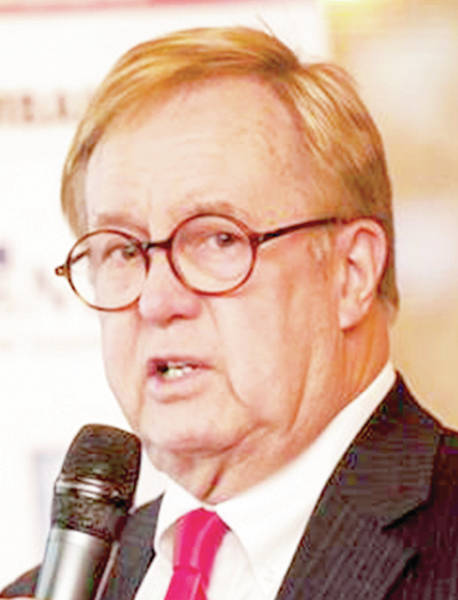It was my privilege both to be an attendee and a speaker at the recent “Fort Elizabeth 200 Hawaii Russia Forum” held in Kapaa which drew the authentically warm, welcoming remarks of Kauai Mayor Barnard Carvalho.
It had been an embarrassingly long hiatus from the last of my several visits to Kauai when I quickly accepted the invitation to return to the island to be a speaker at the event. The central theme was commemorating the 200th anniversary of the fort established and designed by Georg Schaffer, an agent of the Russian American Company.
The company occupied the fort for commercial operations, one of its three on the Island, only for 11 months during 1816-17.
Its presence as I learned was emblematic of visits by seafaring Russian traders years previous. The fort, named after the Czarina of Russia at the time, has relevance in calling to mind the history of the Islands, specifically the episodic contentions between legendary King Kamehameha and his rival Kaumuali’i the last king of Kauai. Intricate to this were maneuverings by Schaffer for an opportunistic alliance with Kaumuali’i to thwart opportunities of traders from the U.S.
Appropriately so for the central purpose of the Forum, there was the presence of several officials from the Russian Federation’s Ministry of Foreign Affairs in Moscow as well as from its U.S. Embassy in Washington, D.C. certain of whom were speakers on the program.
Further to the strength of the program were professors and other speakers from Russia and Hawaii attesting to the historical and anthropological record. Speaking with heartwarming relevance was Aletha Kaohi, a direct descendant of Kaumualii.
For me as a visitor, importantly and foremost given the brief presence at the fort by the Russians, was the recognition of the native Hawaiian context to the site and surrounding area.
Most significantly it was Hawaiians under Kaumuali’i who did the obvious back-breaking lifting and work to build the massive structure, perhaps actually finishing it after the Russians ceased to occupy the venue.
The cultural amenities in the fort at the time are inconclusive but architectural features such as a heiau type platform have been evident. This critical Hawaiian dimension, not to be overlooked was acknowledged by speakers, university-affiliated as well as by historical caretakers.
Further, the cultural heritage use of the area – dating back to the time of Captain Cook’s landfall almost 40 years previous before establishment of the fort, was pointed out along with the fort’s follow-on use by Hawaiians for military purposes.
Hearing so much about the fort does not prepare oneself for its actual physical presence. Fortunately, I visited the site the day after the Forum.
The location on the bluff strategically above the mouth of the Waimea River and the massively thick as well as high walls speak to the fort’s demonstrated cultural relevance, highlighting its Hawaiian heritage.
My Forum experience, the program as well as the site visit left a picture in focus on Hawaiian history and culture. As to images, a number of the Forum participants took part in an 80-mile roundtrip, fast moving catamaran cruise northwestward along the coast to Na Pali.
The coastal waters and the towering topography were awe-inspiring. I was able to view Kalalau Beach where my son and I camped decades ago and which recalled the famous trail hike.
So, maybe another visit — not so distant — with the grandson to Na Pali and Fort Elizabeth, and to enjoy the other delights of your Island.
•••
Bill Boerum is Chairman Emeritus of the Sister Cities International, Washington, D.C.





Thanks for this article. Many people don’t know about the Russian Fort on Kaua’i, and its importance in Hawaii’s history.